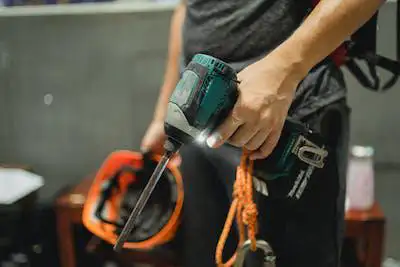First Steps: Identifying and Assessing the Problem
1.Pinpoint the Leak: Water can travel surprisingly long distances before revealing itself. Examine ceilings, walls, and upper floors for dampness, stains, or mold growth. Check attics and crawl spaces for visible leaks or pooling water.
2.Gather Evidence: Document the issue with photos and videos, capturing the extent of the damage, location of the leak, and any visible flaws in the repair work. Note the date and weather conditions when the leak reappeared.
3.Review Contract and Warranty: Remember the paperwork from your initial repair? The contract may hold vital information about warranties, guarantees, and dispute resolution procedures. Familiarize yourself with the terms and clauses before reaching out to the contractor.
Communicating with the Contractor:
1.Open Communication: Begin by contacting the contractor who performed the initial repairs. Explain the new leak calmly and professionally, providing any evidence you collected. Refer to the contract and warranty details if applicable.
2.Schedule Inspection: Request a reinspection of the roof. A reputable contractor will readily agree to assess the situation and identify the cause of the new leak. Remember, clear communication and factual documentation go a long way in establishing a constructive dialogue.
3.Negotiate Options: Depending on the cause of the leak and the terms of your agreement, the contractor may offer several solutions. These could include:
- Free Repair: If the new leak stems from faulty workmanship or incomplete repairs, the contractor should rectify the issue at no additional cost.
- Partial Repair: If the leak arises from unforeseen factors like storm damage or natural wear and tear, you may share the cost of repairs with the contractor.
- Full Roof Replacement: In rare cases, if the initial repairs were inadequate or the original roof was nearing its end of life, a full replacement might be recommended.
Beyond the Contractor:
1.Independent Inspection: If communication breaks down or your concerns feel unaddressed, consider hiring an independent roofing inspector. Their objective assessment can strengthen your case and provide unbiased insight into the cause of the leak.
2.Legal Recourse: In extreme situations involving negligence or breach of contract, consulting a lawyer may be necessary. However, this should be a last resort after exhausting other avenues of communication and resolution.
3.Insurance Considerations: Contact your insurance company if the leak has caused significant water damage or structural concerns. They can guide you through the claims process and help with potential coverage for repairs.
Preventative Measures for the Future:
1.Choose Reputable Contractors: Always select licensed and insured roofers with verifiable references and strong track records. Ask detailed questions about their experience, materials used, and warranty terms before signing any contracts.
2.Regular Inspections: Schedule regular roof inspections, particularly after extreme weather events, to identify potential problems early on. Early detection and proactive maintenance can prevent minor issues from escalating into costly repairs.
3.Warranties and Guarantees: Understand the terms of your warranties and guarantees thoroughly. Keep copies of all paperwork readily accessible for future reference.
4.Proactive Maintenance: Invest in preventive measures like gutter cleaning, proper attic ventilation, and addressing minor cracks or missing shingles promptly. Taking care of your roof extends its lifespan and minimizes the risk of leaks.
Remember: Don't suffer in silence when your roof fails to fulfill its purpose. With clear communication, thorough documentation, and knowledge of your rights, you can navigate this frustrating situation with confidence and protect your investment in your home.
Additional Resources:
National Roofing Contractors Association (NRCA): https://www.nrca.net/
National Association of Home Inspectors (NAHI): https://nahiassociation.org/
Federal Trade Commission (FTC): https://www.ftc.gov/
This guide provides a framework for dealing with post-repair roof problems. The specific steps and resources may vary depending on your location, contract terms, and the nature of the issue. With a proactive approach and informed decision-making, you can overcome this challenge and restore peace of mind to your home.

